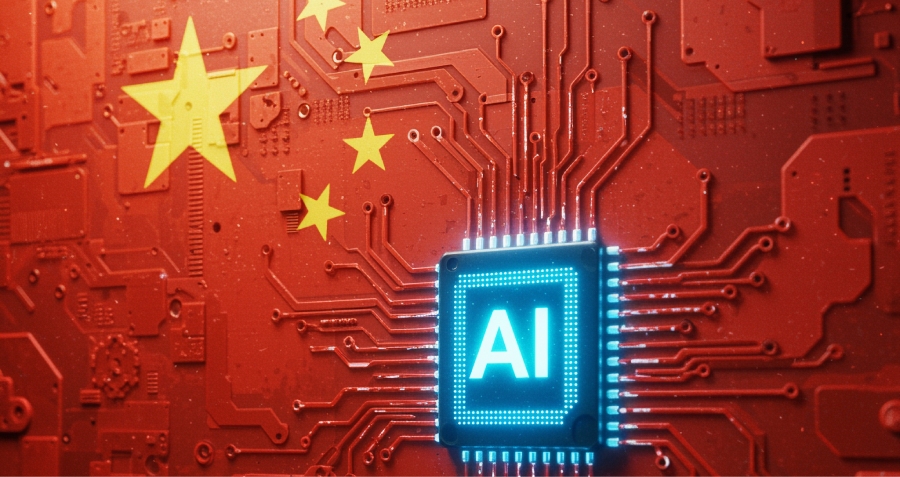By Edward Tse, Professor of Managerial Practice at CKGSB
In the early 2000s, Chinese entrepreneurs began to experiment with new business ideas. With the increasing popularity of the PC-internet, e-commerce started to emerge and Chinese consumers started to take notice of the new phenomenon.
Fast forward to the early 2010s, and wireless internet had been introduced and placed in the pockets of the masses through smartphones, with entrepreneurs then beginning to use this to experiment with new business models addressing the “pain points” of Chinese society, such as logistics blockages. In the subsequent ten years, innovation expanded massively as did the number of Chinese entrepreneurs, and internet companies such as Alibaba, Tencent, JD.com, Baidu, Meituan and ByteDance became household names. Besides the internet, other Chinese tech companies such as Huawei, Xiaomi and DJI also grew phenomenally.
Entrepreneurs in the internet sector typically built speedy and agile companies that fearlessly experimented with new business models and subsequently improved and refined their models based on the market’s feedback. Sectors like e-commerce, social commerce, fintech, O2O (online-to-offline) retail and mobility grew rapidly.
The development of innovation in China during this period was driven by policies, such as wide-ranging subsidies, that led to improvements in technology and demand pattern changes. And these are still the three drivers that push tech innovation forward today.
The Chinese government has developed a vision for the nation and for over a decade has been finetuning it, constantly synchronizing it with the evolving context, placing innovation and entrepreneurship at the center of the country’s policies. Today, technological innovation remains a key focus area in China’s policies.
There’s no doubt that technology plays a major role in innovation. After the wireless internet started to lose steam as the platform for innovation, other disruptive technologies such as artificial intelligence (AI), cloud computing, Big Data analysis and blockchain technology surfaced, ushering China into a new era of technological change.
Patterns of demand from consumers and organizations are also changing as digital technology permeates all aspects of Chinese people’s lives, as well as as a result of the pandemic.
The three drivers of innovation interact with each other, generating further waves of innovation. Innovation based on hard tech is the new game, epitomized by deep technological expertise and breakthroughs, precision and patience. Capital and entrepreneurship are now being channeled to areas such as new energy, semiconductors, robotics and automation, biomedicine and life sciences, as well as security. A new generation of entrepreneurs has emerged, including Robin Zeng of CATL, He Xiaopeng of Xpeng and Tang Xiao’ou of SenseTime.
The common denominator in all this is the “China model.” The central government formulates the overall plan for the national economy and businesses pursue goals that are generally in alignment with government policies and plans. Local governments act as the bridge between Beijing and individual businesses, providing funding support, subsidies and incubation support.
China’s dual economic structure of state-owned enterprises (SOEs) and privately-owned enterprises (POEs) is also a source of resilience. While at times, there are glitches between these two types of companies, especially when they compete in the same space, they can also be complementary to each other in a broader sense. SOEs play a major role in providing public goods to the Chinese society beyond narrow economic considerations so that people and businesses, both Chinese and foreign, can benefit from supplies of these public goods. This three-layered system and the dual economic structure together generate a positive flywheel for progress of innovation in China.
Other underlying drivers, such as the growing number of students studying STEM, the increasing number of patents filed and scientific papers published, all provide evidence that China is heading in the right direction.
The West’s view has evolved from seeing China as a “copycat nation” to recognizing its successes in development and technology. This process has taken well over two decades. Today, the West’s views vary from acknowledging China’s ability to innovate but calling it fragile and having “peaked,” to taking the view that “China is overtaking, or has overtaken, the US in technology already.” However, geopolitics continues to create uncertainties. The risk of decoupling is an overhanging concern for many Chinese entrepreneurs.
Despite this, the Chinese system and entrepreneurial zeal continue to drive the nation’s innovative spirit. From China’s perspective, growth in the last four decades could not have taken place without being a part of the global system. However, innovation could not have leapfrogged that of other nations without strong internal self-initiation and determination at both entrepreneurial and government levels. The West did provide initial inspiration, but subsequently the Chinese also figured out ways to propel innovation forward, in sync with the context under which they operate. Sanctions against a range of Chinese technology companies have also compelled these companies to achieve technological breakthroughs on their own.
In the semiconductor sector, for instance, China has historically used imported chips in the manufacture of finished products, rather than designing and producing its own. This tactic was based on the nature of the then-prevailing globalization in which natural division of labor across countries and around the globe was the governing assumption. For such highly-capital-intensive industries as semiconductors, a global division of labor makes sense.
The current sanctions on China’s semiconductor industry are having a significant effect and there is speculation that such measures could cause havoc for Chinese industry. But Chinese companies are now beginning to make measurable progress in chip design computer software, lithographic machinery, and production capability, on top of their pretty strong position in testing and packaging, though they are yet to catch up fully with leading global semiconductor players.
China’s innovations have had a definitive impact across many sectors, particularly in new energy vehicles, renewables, sustainability, intelligent manufacturing, advanced medical devices and fintech. Global companies in these sectors are now investing more in China to tap into its local R&D and product development capabilities. Volkswagen has announced investment of €2.4 billion ($2.37 billion) in a joint venture with Chinese tech firm Horizon Robotics, to build best-in-class autonomous driving capabilities. Daimler is investing $154 million to expand its R&D in China and Intuitive Surgical of the US is to build an R&D center in Shanghai for developing local innovations.
It is essential for global companies to be clear on the intent behind political rhetoric and understand China’s innovation capabilities for formulating their own strategies, particularly in cases where China is, by definition, at the core of their businesses. For many, China is not only a major market but also a key source of knowledge and inspiration. This is becoming even more prevalent as Chinese innovators have started to set new standards of technology and business practices of relevance to the whole world.




















